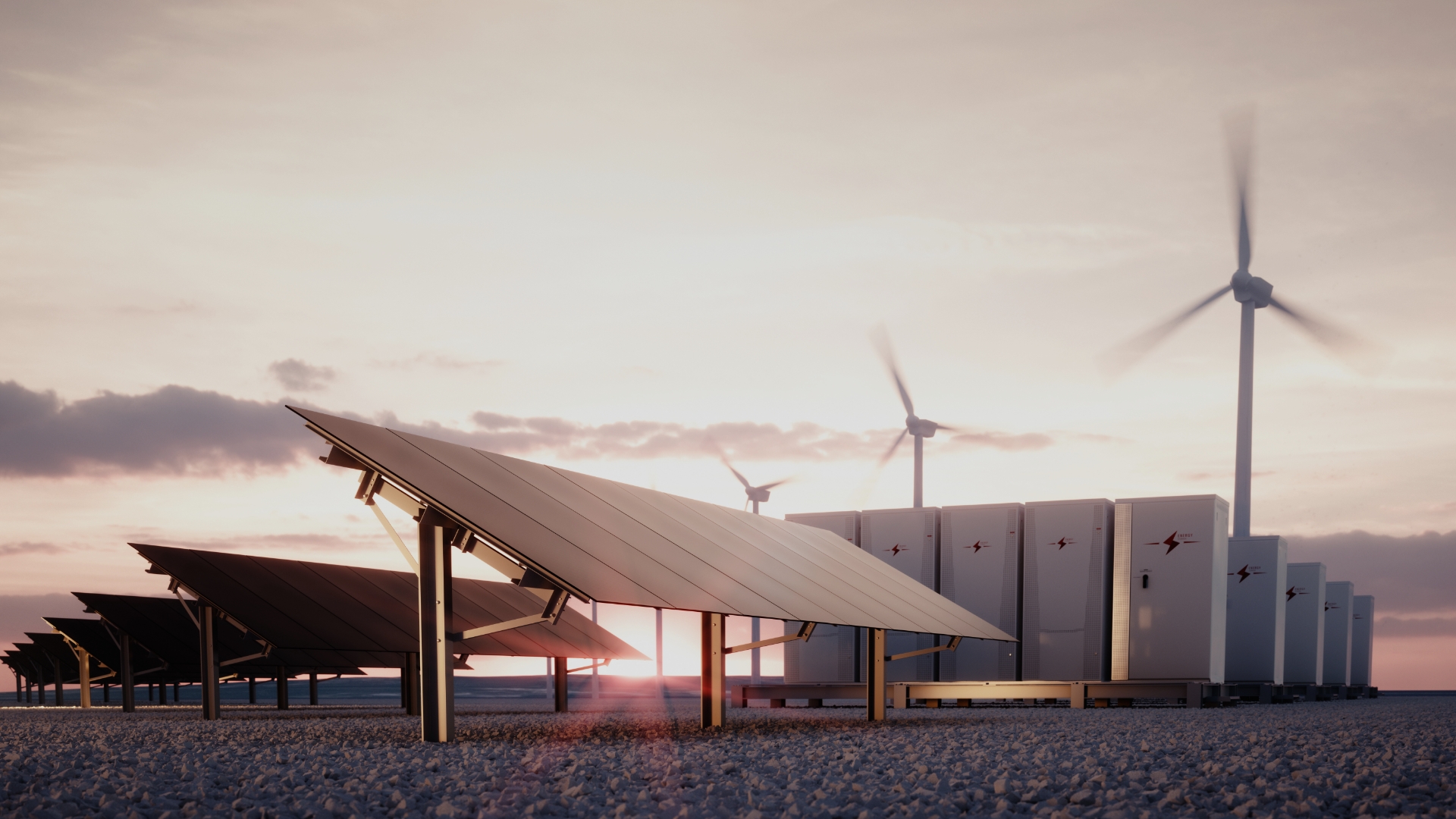
-
GC-9
In order to fully exploit the potential of dispersed sources and ensure safe operation of the system, it is necessary to modernise the grid and build energy storage facilities.
The PGE Group is carrying out analytical and preparatory work on energy storage development opportunities. The strategic aspiration is to build 1,2 GW of storage capacity by 2030.
PGE Group currently sees potential for the development of electrochemical energy storage facilities, such as the over 200 MW energy storage facility operating at the Żarnowiec pumped storage power plant or approx. 50 smaller energy storage facilities cooperating with the main power supply points in the PGE Dystrybucja area.
At the same time, the Group sees opportunities related to the development of new pumped storage power plants such as: Młoty, which also perform an energy storage function in the National Power System.
In 2022, the following activities have been performed in the PGE Group regarding the implementation of the strategy for the objective Construction of energy storage facilities:
- Announcement of tender for a battery electricity storage facility in Żarnowiec with a capacity of over 200 MW;
- Commissioning of 4 large-scale battery electricity storage projects with a total capacity of 750 MW
- Commissioning of a distributed storage project across 50 locations with a total capacity of approx. 270 MW
- Development of 5 energy storage projects as part of hybrid RES systems with a capacity of approx. 80 MW
- Development of 3 energy storage projects for distribution grids with a total capacity of approx. 6 MW
- Feasibility study for the construction of Młoty pumped-storage power plant
Hybrid electricity storage in Żarnowiec - an innovative project on a European scale
Batery Energy Storage System (BESS) in Żarnowiec
Hybrid system in Żarnowiec
PGE’s energy storage project in Żarnowiec with a capacity of more than 200 MW, on a unique scale in Europe, has been granted Poland’s first concession promise for storing electricity in a large-scale electrochemical energy storage system. The promise was issued by the President of the Energy Regulatory Office in July 2022. Before that – in June 2022 – the project was granted a decision on environmental conditions, which is a necessary and extremely important step for continuing the project work.
The construction of the large-scale Battery Energy Storage System (BESS) next to the Pumped Storage Power Plant (ESP) Żarnowiec with a power rating of no less than 200 MW and capacity of more than 820 MWh is one of the largest projects of its type in Europe.
The project aims to combine the existing ESP Żarnowiec with a rating of 716 MW with BESS with a rating of no less than 200 MW and capacity of over 820 MWh. This innovative hybrid setup with a power rating of at least 921 MW and capacity of more than 4.6 GWh, which corresponds to the capacity of the largest conventional units in Poland, will be capable of providing a full range of regulatory system services, providing “restoration” of the power system and supplying electricity to approx. 200,000 households for a period of at least 5 hours (given an average load of 5kW per household).



The planned BESS was entered in the Capacity Market register in the first quarter of 2022 and the on-going project work resulted in obtaining the conditions for connecting it to the transmission grid. In addition, BESS will perform technical and commercial balancing for unstable renewable energy sources, i.e. onshore and offshore wind farms and photovoltaic farms owned by PGE Group.
The project is located approx. 10km from the Baltic Sea, where PGE holds three location permits for the construction of offshore wind farms with a total capacity of 3.5 GW. PGE Group’s “Lotnisko” wind farm with a capacity of approx. 100 MW and the potential to add a further 140 MW, including large-scale PV farms, is situated some 30km from ESP Żarnowiec and the planned energy storage system.
All of these PGE Group assets will be connected to the National Power System through the 400/110 kV substation Żarnowiec located some 2km from ESP Żarnowiec and BESS and the 400 kV substation Choczewo, which is being built for offshore wind farm purposes in the vicinity (approx. 15-20km) of the Żarnowiec substation. Connecting these units within one area of the National Power System will make it possible to integrate green electricity produced by these assets and will enhance their flexibility and controllability.
The potential of the planned hybrid system may also prove to be helpful in increasing the energy security of Poland and the Baltic states. It will also increase the competitiveness of energy markets and the synchronisation of the energy systems of Lithuania, Latvia and Estonia with the system of continental Europe through the Harmony Link project, which is an interconnector for the exchange of electricity between Lithuania and Poland.
With this connection, Lithuania’s electricity system will be linked to the Polish system via a 330-kilometre-long submarine cable between the Żarnowiec substation in Poland and the Dorbian substation in Lithuania.
The scale, functionality, location and importance of this project for the National Power System and the development of renewable energy sources makes it possible to state that it is an innovative project not only on a national scale but also in Europe.
The green transition, based on renewable sources, requires massive investment in energy storage. The development of RES is very dynamic in Poland today; we are one of the European leaders in this respect. However, in order for renewable energy sources to increase energy security and reduce the bills of individual customers, it is necessary to equip them with energy storage facilities. They are indispensable for us to be able to use the energy produced by RES to the greatest possible extent.


